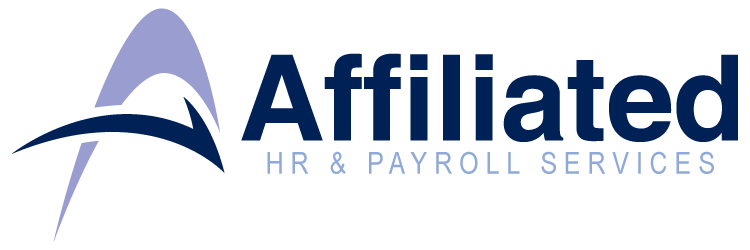
by CJ Maurer | Jun 25, 2024 | Benefits & Compensation, Texas
With a population exceeding 29 million people, Texas is not only one of the largest economies in the world but also one of the largest US states. It is a diverse state, home to hundreds of ethnic groups with varying religions, races, genders, and age groups.
Multicultural workplaces are critical to long-term success in the 2020s and beyond. Key industries in Texas, such as Oil & Gas, tech, and healthcare, are more fortuitous when there is strong diversity and inclusion in the workplace to best serve a wide variety of clients and users.
Is your organization measuring up? According to Pew Research, 56% of workers believe that increasing diversity, equity, and inclusion (DEI) measures in the workplace is beneficial. Women and racial minorities, in particular, express strong interest in employers with clear DEI policies and resources. Employers looking to attract Gen Z talent should consider inclusive benefits and DEI programs as a worthwhile investment, as 68% of Gen Z and younger Millennial workers feel that more workplaces need to focus on DEI.
What Makes a Workplace Diverse?
Diversity isn’t just the optics of different races, genders, and religions. Diversity also encompasses differences in the following categories and more:
- Age
- Disability
- National Origin
- Family Status
- LGBTQIA+
- Body Diversity
The “equity” aspect of DEI entails learning how people who are different from us navigate the same worlds, both in and out of the workspace.
Some of your day-to-day experiences may seem normal until an interaction with a co-worker, customer, or manager is drastically different due to unconscious biases. For example, women in the workplace are often expected to take on tasks like making coffee and planning birthday parties, even if these tasks are unrelated to their job descriptions.
While Texas is an at-will state, and job descriptions can be altered at any time, this is an example of unconscious bias and social expectations at work.
Diversity and inclusion in the workplace involve having employees listen to their co-workers in underrepresented groups, receive training in unlearning biases, and determine how to create a more equal playing field. The inclusion aspect takes actionable measures to address the inequities that dominant groups don’t notice.
Traditional Employee Benefits Lack Inclusivity
Like other areas of life, employee benefit management can be influenced by biases. Multicultural workplaces require the same fundamental benefits that most employers provide, such as health insurance and a retirement plan. Employers with comprehensive benefits packages may also offer additional perks such as whole life insurance, disability insurance, paid parental leave, and family bereavement leave.
While these benefits are valuable and attractive, a majority of them are geared toward heterosexual married couples with children who all live in the same household.
Traditional employee benefits often do not take into consideration the needs of single individuals, LGBTQIA+ employees, those living in multigenerational households, or individuals with disabilities. Participation in benefit programs is driven by both needs and wants, as well as the ability to participate.
For example, employees who experience the loss of a life partner and need time off to grieve may not qualify for traditional bereavement leave policies if the deceased is not their spouse or immediate family. Similarly, employees without children may not be interested in life insurance but still want to establish a safety net.
Family status aside, benefits like paid holidays can be culturally insensitive if not well thought out. Employees who don’t observe a religious holiday may prefer to have paid time off if they have a religious observance that falls on a different date.
Cultural and language barriers, poor work-life balance, obligations at home, and physical and mental limitations can also prevent employees from participating in benefit programs, even if they’re totally free at the point of use.
Flexibility is Key to Building Diverse Teams
The key feature of inclusive employee benefits is that they need to be flexible and personalized, demonstrating trust in employees to choose what is best for their needs. Benefit programs also need to be sensitive to a wider range of needs.
Not all benefits are equitable, as some are simply designed to better serve some demographics over others. For example, health and wellness benefits tend to favor employees who don’t experience racial, weight, and gender bias and who have the free time to participate. Employees with health needs that their insurance and flex spending plans can’t meet also need to spend more of their disposable income on these expenses.
Offering more flexibility with spending accounts, paid time off, remote work, and prioritizing results over hours clocked attracts a wider range of employees from all kinds of demographics. Their perspectives and lived experiences will inform how products are built, and end users are served, creating a mutually beneficial relationship that leads to more long-term growth.
Flexibility is the cornerstone of inclusive employee benefits. They give employees more resources to improve their lives, regardless of their background, household composition, and personal lives. Contact Affiliated HR & Payroll Services today to learn how we can help you develop and manage inclusive benefit programs tailored to your diverse workforce in Texas.

by Afilliated HR & Payroll | Apr 3, 2024 | Benefits & Compensation, HR Administration, Regulatory Compliance
Pay stubs can be referred to as pay or wage statements and may be considered the decoder ring of payroll. Pay statements summarize employees’ gross pay, taxes and deductions, and net pay. They can be in printed format or made available electronically.
Pay stubs help employees confirm what was withheld from their gross pay so they can understand how the final net pay amount was arrived at. Pay stubs are useful to employers as well, especially when they need to solve wage and hour disputes or tax discrepancies.
While no federal law requires pay stubs, most states do — you can view pay stubs as part of payroll compliance. For example, some states need employees to consent to receive electronic pay statements. State mandates can pose potential complications for businesses with employees in multiple states, as each state has its own set of rules.
What’s on a pay stub
Pay stubs should have these basic elements:
- Amount per pay period.
- Year-to-date pay.
- Basic identifying information: name and address of the employer, name and address of the employee, and the employee’s Social Security number.
- Pay period and total hours worked.
- Gross wages, or the total amount earned for the pay period before taxes. If an employee worked 15 hours at $20 per hour, gross wages are $300. Pay stubs should note hours worked, what the pay rate is and any additional earnings or accrued time off.
- Tax deductions, including federal tax withholding, state tax withholding, unemployment taxes, Social Security tax and Medicare withholding.
- Employee benefits deductions often include health insurance, health savings accounts, life insurance payments and retirement contributions.
- Voluntary deductions, which include the amount an employee chooses to withhold monthly and may include a regular charitable contribution.
- Involuntary deductions such as wage garnishments, past taxes owed and court-ordered child support payments.
- Net pay, the amount of money employees take home after all deductions are made.
Pay stubs offer employees transparency in how they’re getting paid, noting gross income, deductions and net income. Workers get year-to-date information and can verify that compensation is accurate. Lenders often ask to see pay statements as proof of income or employment before approving a loan. Pay stubs help prevent pay-related conflicts.
If you miscalculate, the withholding amounts for taxes may include errors that may cost you penalties. Pay statements that are inaccurate or improperly delivered can confuse employees and increase the risk of legal liability. It’s in your best interest to:
- Know all state and local requirements.
- Include the necessary information.
- Make pay stubs easy to access.
Many companies opt to work with a payroll service provider, which will typically include pay stub delivery as part of their service and can assist with state and local pay statement requirements. It’s generally a good practice to save pay statements for at least one year so you can verify the accuracy of your annual Form W-2, Wage and Tax Statement for employees to prepare their individual tax returns.
Pay statements contain personal information that can be subject to identity theft. Retain them in a safe place and securely dispose of them. If employees report losing a stub, advise them to monitor their credit reports and alert their bank and credit reporting agencies so they can flag any suspicious activity. If a copy of a lost pay statement is needed, employees may request another from your payroll department.

by Afilliated HR & Payroll | Mar 18, 2024 | Benefits & Compensation, Career Planning
A compensation plan is designed to attract and retain employees. Build your compensation plan to ensure pay equity while balancing the needs of your small business and delivering value to customers.
Pay competitively relative to companies similar to yours in size and industry in your region. Compensation can tie in directly to regional compensation data, how employees are performing in their roles and where they are relative to the next level above them.
Set a philosophy on where you want your overall compensation to fall compared with the ranges in your market. By setting ranges, you assess your employees within a framework based on market data, so you can be transparent with them. Your criteria can mix technical skills with the soft skills you consider important across your organization, and that will aid in conversations about growth and how employees can get promoted to the next level. Workers are more likely to stay in a role where they anticipate salary growth and the development path to get there. This creates more predictability for the finance team.
Consider all the moving parts
A basic compensation package consists of salary or wages. A more comprehensive compensation package includes additional benefits: bonuses, perks, commission, health insurance and retirement plans. For employees, a sense of belonging imbues job satisfaction, engagement and effort. The right compensation strengthens self-direction, interconnectedness and success.
Compensation plans offer fair and competitive payments that align with the company budget and promote business success. Structure a competitive compensation program with direct and indirect components.
Direct compensation refers to the financial payments — salaries, bonuses and equity — in exchange for time worked or results obtained. Salary is the bedrock of your company’s compensation plan. When calculating wages, consider the following important factors:
- Geography.
- Job responsibilities.
- Cost of living.
- External market data.
When calculating bonuses used to reward team members for high performance, consider these three questions:
- Who’s eligible for a bonus?
- Which targets should they hit to earn a bonus?
- What should the payment structure look like?
Equity compensation offers a stake or partial ownership in the company to encourage high performance. Team members get the message that when the company succeeds, everyone succeeds.
Look at the big picture
Holistic, people-driven strategies work to improve company culture by attracting and retaining talent. Competitive salaries help, but they are rarely enough anymore. Today’s indirect compensation elements include:
- Medical insurance.
- Dental and vision coverage.
- Retirement benefits.
- Wellness benefits like gym memberships.
- Educational incentives.
- Mental health services like therapy or counseling.
- Volunteer opportunities.
- Flexible spending accounts.
- Hybrid working arrangements.
- Paid time off.
- Disability insurance.
- Paid holidays.
- Child care initiatives.
- Relocation stipends or housing options.
- Reimbursement for work-from-home costs.
- Commuter benefits.
Compensation packages that adequately reward employees for their hard work can drive business profit. An effective compensation plan illustrates company integrity and transparency, assists in attracting and retaining top talent, boosts employee motivation and loyalty, and reduces turnover and hiring expenses.
Base your program on external market analysis and internal company data. Benchmark with similar organizations to create an appealing payment package.
Take the long view
By outlining your company’s underlying approach to compensation, you place the program in context, promoting alignment with your company’s objectives and values. A good compensation plan includes a pay-for-performance strategy, for example, that helps retain employees.
Explain the program to employees, communicating the components to demonstrate integrity and nurture trust. When your team understands your compensation philosophy, it can feel confident investing effort in the work.
A clear employment contract — aligned with state and federal laws — shows respect for employee-employer relations and helps prevent disagreements and legal misconduct. Pay is personal — it’s how employees measure their worth to their employers and fund and build their lives. When you get compensation right, it positively impacts your workers and lets them better focus on the work.

by Afilliated HR & Payroll | Feb 6, 2024 | Benefits & Compensation
Many businesses, their accountants and advisers have been wondering what’s happening with the employee retention credit, a refundable tax credit for businesses and tax-exempt organizations that had employees and were affected by the COVID-19 pandemic. In recent weeks, the IRS has been focusing on weeding out companies that applied but were not eligible. Copies of Letter 105 C, Claim Disallowed, are on their way. Recipients are being notified that their claims are being disallowed since either the entity did not exist or it did not have paid employees during the period of eligibility.
For those with pending claims who realize that they may have filed an inaccurate tax return, there is an opportunity to withdraw from the program. Those taxpayers who have not yet received any refund have until the end of the year to withdraw their claim. By doing so, they can avoid any future repayment, interest and penalties. Withdrawals are also possible if a check was issued but was not cashed or deposited. Additionally, a voluntary disclosure program will allow those who received questionable payments to avoid any further IRS action.
The word from the top
As IRS Commissioner Danny Werfel tells it, “As we continue our audit and criminal investigation work involving the employee retention credits, we continue to urge people who submitted a claim to review the rules with a trusted tax professional. If they filed an inaccurate claim, we urge them to consider withdrawing their pending claim or use the upcoming disclosure program to repay improper refunds to avoid future action.”
As of Sept. 14, the IRS had put a halt on processing ERCs at least until the end of 2023. Those claims submitted prior to Sept. 14 will receive enhanced compliance reviews. This is a crucial step in protecting against fraud and to protect businesses and organizations from facing penalties or interest payments stemming from bad claims touted by promoters. A legitimate claim is a refundable tax credit designed to reward those businesses that continued to pay their employees during the COVID-19 pandemic. The operation of these businesses were fully or partially suspended in compliance with the government order or saw significant losses of gross receipts during the eligible period.
The disallowance letters that identify ineligible claims before they’re paid serve several purposes that help taxpayers and tax administration. They:
- Help ineligible taxpayers avoid audits, repayment, penalties and interest.
- Protect taxpayers by preventing an incorrect refund from going to an ERC promoter.
- Save IRS resources by disallowing incorrect credits before they enter the audit process.
During this period, the agency urges taxpayers applying for the ERC to use extreme caution about aggressive marketers and potential scammers. It is recommended they consult with a trusted tax professional about their eligibility.
For more information on ERC eligibility, see the ERC frequently asked questions and the ERC Eligibility Checklist, which is available as an interactive tool or as a printable guide.

by Afilliated HR & Payroll | Jan 9, 2024 | Benefits & Compensation, HR Administration, Recruiting and Developing Talent, Regulatory Compliance
Are we required to update our I-9s when the documentation used for them expires?
You would only update a Form I-9 if the expired document pertains to a limited period of employment authorization. You should never reverify U.S. citizens and, in most cases, lawful permanent residents (Green Card holders). However, if a lawful permanent resident presents their employer with temporary evidence of lawful permanent resident status for Section 2 (instead of an unexpired permanent resident card), then reverification may be necessary.
We recommend that you set up a tracking system for the I-9s that will require reverification. Consider setting a calendar reminder for 90 days before the expiration of the document or the expiration date listed by the employee in Section 1 of the I-9, whichever is sooner. Then provide the employee written notice of the need to reverify, the deadline to do so, and the I-9 list of acceptable documents they may use for reference.
Once the employee has presented acceptable documents, you should review and complete the reverification section of the Form I-9 (Supplement B of the Form I-9 version dated 8/1/23).
If the Form I-9 version that the employee originally completed is no longer valid, complete Supplement B of the Form I-9 version dated 8/1/23 to reverify the employee. To do this, an employer should:
- Enter the employee’s name at the top of each Supplement B page you use (and use the New Name field to record any name change the employee reports at the time of reverification or rehire);
- Use a new section of Supplement B for each instance of a reverification or rehire;
- Use the Additional Information fields if the employee’s documentation presented for reverification requires future updates; and
- Sign and date that section when completed and attach it to the employee’s completed Form I-9.
This Q&A does not constitute legal advice and does not address state or local law.

by Afilliated HR & Payroll | Jan 3, 2024 | Alert, Benefits & Compensation, Regulatory Compliance
Below are federal payroll tax rates and benefits contribution limits for 2024.
Social Security tax
In 2024, the Social Security tax rate is 6.2% for employers and employees, unchanged from 2023. The Social Security wage base is $168,600 for employers and employees, increasing from $160,200 in 2023. Self-employed people must pay 12.4% on the first $168,600.
Medicare tax
In 2024, the Medicare tax rate for employers and employees is 1.45% of all wages, unchanged from 2023. Self-employed people must pay 2.9% on all net earnings.
Additional Medicare tax
In 2024, the additional Medicare tax remains unchanged at 0.9%. This tax applies to wages and self-employment income over certain thresholds ($200,000 for single filers and $250,000 for joint filers).
401(k) limits
In 2024, the maximum contributions to traditional and safe harbor plans are as follows:
- Employee (age 49 or younger): $23,000, up from $22,500 in 2023.
- Employee catch-up (age 50 or older): $7,500, unchanged from 2023.
- Employee and employer (age 49 or younger): $69,000, up from $66,000 in 2023.
- Employee and employer (age 50 or older): $76,500, up from $73,500 in 2023.
Employees can contribute up to $16,000 to a SIMPLE 401(k) plan, up from $15,500 in 2023.
Health savings account and high-deductible health plan limits
In 2024, the maximum contributions to an HSA are as follows:
- Employer and employee: $4,150 (self only) and $8,300 (family).
- Catch-up amount (age 55 or older): $1,000.
In 2024, the limits for an HDHP are as follows:
- Minimum deductibles: $1,600 (self only) and $3,200 (family).
- Maximum out-of-pocket amounts: $8,050 (self only) and $16,100 (family).
Flexible spending account limits
In 2024, employees can contribute:
- Up to $3,200 to a health care FSA, increasing from $3,050 in 2023.
- Up to $5,000 to a dependent care FSA if filing single or jointly and up to $2,500 if married but filing separately.
Qualified Small Employer Health Reimbursement Arrangement limits
In 2024, employers with a QSEHRA can reimburse employees for health care expenses as follows:
- $6,150 (self only), up from $5,850 in 2023.
- $12,450 (family), up from $11,800 in 2023.
Commuter benefits limit
In 2024, employees can contribute up to $315 per month for qualified commuter benefits (e.g., mass transit and parking), up from $300 per month in 2023. This limit includes any employer contributions.
Adoption assistance exclusion limit
In 2024, up to $16,810 in employer-sponsored adoption assistance may be excluded from an employee’s gross wages, increasing from $15,950 in 2023.
Remember, these are all federal rates and limits. Be sure to check with the necessary agencies for state and local rates.
Note that this is a summary of some very complex provisions. Don’t make any assumptions about your situation until you’ve spoken with a qualified tax professional.






